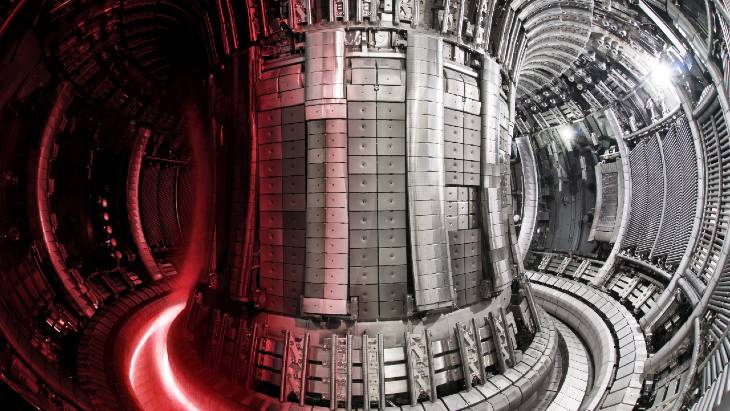Fusion energy record at JET 'huge step' forward

Tony Donne, EUROfusion programme manager, said: "This achievement is the result of years-long preparation … the record, and more importantly the things we’ve learned about fusion under these conditions and how it fully confirms our predictions, show that we are on the right path to a future world of fusion energy.
"If we can maintain fusion for five seconds, we can do it for five minutes and then five hours as we scale up our operations in future machines.”
Researchers from the EUROforum consortium - 4800 experts, students and staff from across Europe, co-funded by the European Commission - more than doubled the previous record set in 1997 at the UK Atomic Energy Authority (UKAEA) site near Oxford.
The Joint European Torus (JET) is the largest and most powerful operational tokamak machine, where temperatures can reach levels 10 times hotter than the centre of the sun.
The latest results are seen as a major boost for the International Thermonuclear Experimental Reactor (ITER) project, which is the larger multinational fusion research project based in southern France, backed by the European Union, China, India, Japan, Russia and the USA, which aims to further demonstrate the scientific and technological feasibility of fusion energy.
ITER Director General Bernard Bigot said: "A sustained pulse of deuterium-tritium fusion at this power level - nearly industrial scale - delivers a resounding confirmation to all of those involved in the global fusion quest. For the ITER project, the JET results are a strong confidence builder that we are on the right track as we move forward toward demonstrating full fusion power."
UKAEA CEO Ian Chapman said: "These landmark results have taken us a huge step closer to conquering one of the biggest scientific engineering challenges of them all. It is reward for over 20 years of research and experiments with our partners from across Europe."
UK Science, Research and Innovation minister, George Freeman, said the "milestone results" showed "the ground-breaking research and innovation being done here in the UK, and via collaboration with our partners across Europe, is making fusion power a reality."
The work at JET is seen as a "vital test bed" for ITER and future fusion power plants which plan to use the same deuterium-tritium fuel mix and operate under similar conditions.
The current schedule is for ITER's First Plasma in December 2025 with deuterium-tritium operation beginning in 2035. The European Fusion Development Agreement outlined a goal of bringing fusion electricity to the grid by 2050.
What is nuclear fusion?
Fusion powers the Sun and stars as hydrogen atoms fuse together to form helium, and matter is converted into energy. Hydrogen, heated to very high temperatures changes from a gas to a plasma in which the negatively-charged electrons are separated from the positively-charged atomic nuclei (ions). Normally, fusion is not possible because the strongly repulsive electrostatic forces between the positively charged nuclei prevent them from getting close enough together to collide and for fusion to occur.
However, if the conditions are such that the nuclei can overcome the electrostatic forces to the extent that they can come within a very close range of each other, then the attractive nuclear force (which binds protons and neutrons together in atomic nuclei) between the nuclei will outweigh the repulsive (electrostatic) force, allowing the nuclei to fuse together. Such conditions can occur when the temperature increases, causing the ions to move faster and eventually reach speeds high enough to bring the ions close enough together. The nuclei can then fuse, causing a release of energy.
_92619.jpg)

_84504.jpg)







_88592.jpg)

